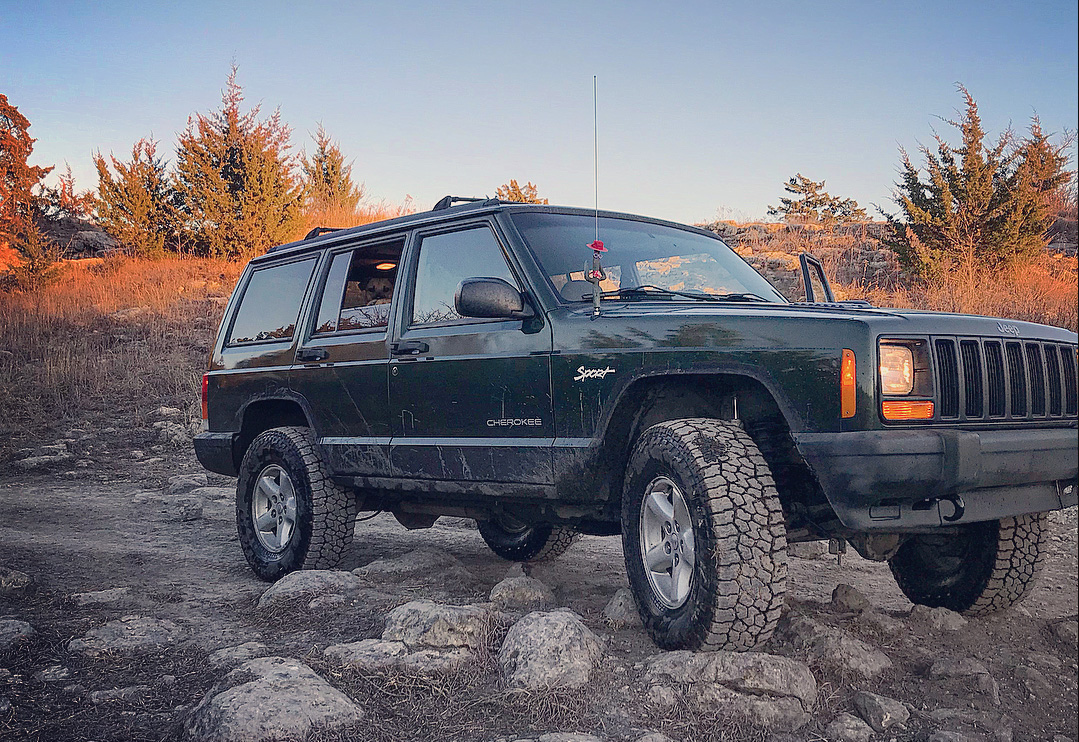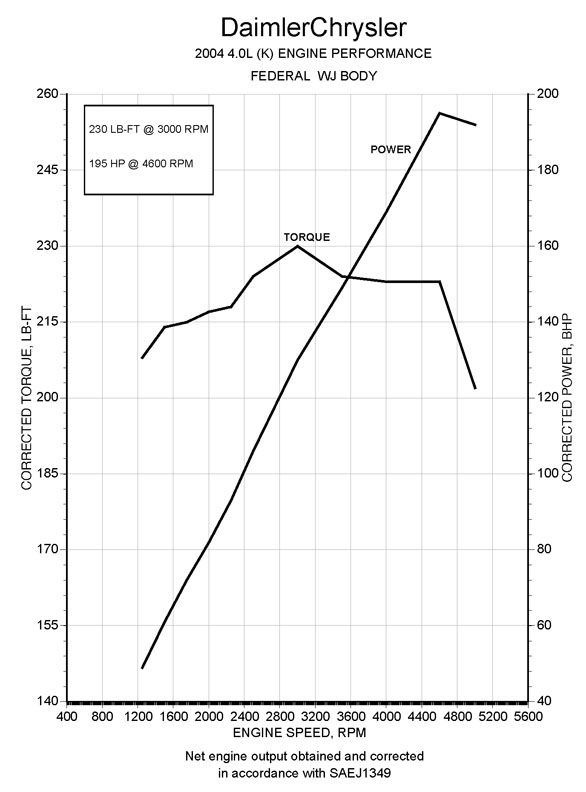I'm going to start modding my XJ overland-rig to be more aerodynamic on the highway. This will allow me to get to my off-roading destinations (most are 8+ hours away) with less gas used, less possibility of overheating (that's an issue with these hot-running motors), and possibly at a faster speed. Goal: find mods that are helpful to both off-road performance and aerodynamics/fuel-economy.
My vehicle is a 1997 Jeep XJ 4.0L auto. 2" lift and 31" AT tires installed. 250,000 miles on the odometer.

There is lots of room for improvement. Check out my main inspiration, this guy got his XJ to go from 16 mpg to 27 mpg highway, and others claim to get near 30mpg highway:
http://ecomodder.com/forum/showthrea...mods-2614.html
So there will be three parts to my ecomodding quest:
- reducing drag
- decreasing rolling resistance
- increasing torque at lower RPMs
Reducing Drag
Here's some ideas on how to get the air to flow around the XJ without dragging it down so much:
- air dam
- the job of the air dam is to deflect as much air to go around the vehicle and tires as possible, so that it doesn't go under the vehicle
- keep the stock air dam! it's the plastic thing under the front bumper. You can even extend it and make it bigger
- Removing the air dam will probably mean a drop in 1 or 2 mpg on the highway
- skid plates
- this mod is great because it's awesome for both off-road and on-highway
- the air that is traveling under the jeep can get sucked up into the negative pressure zones under the body and swirl around and cause drag. Skid plates can help prevent this
- The skid plate that protects the front suspension and steering stuff also does a great job of deflecting air to go under the front axle and engine (see the youtube vid below)
- transfer case skid plate helps as well, make it as flat and wide as possible
- roof rack delete
- yeah I don't like this one either but, depending on how it's designed it can really really slow you down
- rear diffuser...?? It could also double as a gas tank skid plate!
- rake the vehicle by lifting the rear only a few more inches? I doubt this will help, it seems to me that a raked vehicle is only a benefit because the front is lowered rather than the rear raised.
- tire spats! for the rear tires
- Soften the aft edge of front wheel arches
Check out this video I found on youtube. It shows the effects of the front skid plate on air flow around the front axle. Pretty cool to see how it works!
https://youtu.be/a8PUBB99opo
Decreasing rolling resistance
Larger tires
can potentially increase your MPG. And they increase your off-road fun! Win win!!
Taller tires changes the final gearing and reduces the rolling resistance. Read:
Taller Tires - EcoModder This is kind of flying in the face of the old rule-of-thumb that is "for every inch of tire size you go up, you loose a MPG." So which is it? I'll deal with this question in the next section.
2nd part to decreasing rolling resistance:
inflating the tires to 40+ psi. Quick story with my jeep that runs hot: I was driving for a few hours to Wichita, Kansas, and the jeep started to overheat bad although it was only 70 degrees out. I had to slow down to 65 mph until I got to a rest top. There, I inflated the tires to from 30 psi to 40 psi. For the rest of the trip I could go 80 mph without over heating! (again, a better radiator will fix the running hot problem, but it illistrates how much more efficient the jeep goes down the road with higher pressure in the tires)
3rd part to decreasing rolling resistance: replace all the gear fluid to a lighter synthetic. Will be expensive but will help a lot as the front axle is always spinning even if in 2wd mode, because the front hubs aren't selectable.
Increasing Torque at Lower RPMs
I emphasized
"can potentially" in the above section because, when you increase the tire size without correcting the axle gears, you change the final gearing and this changes the RPM that the motor will run at with respect to vehicle speed.
For example, with 31" tires replacing my stock 28" tires, the transmission is now in overdrive and cruising at 75 mph at a lower RPM. I used
Gear Ratio Calculator to calculate the my RPM at 75 mph:
With stock 28" tires: 2400 RPM
With new 31" tires: 2160 RPM
Now take a look at the power band of a 1997 4.0L I-6 motor:

Notice that the power is significantly lower at 2000 rpm than it is at 2400 rpm.
You're going to have to push the go-faster peddle a little harder now with 31" tires than you would with 28". Therefore you MPG will suffer.
But if we can spend a little time and effort to add more power, especially in the lower RPM range, then we can get our fuel efficiency back.
At this moment I'm still researching the best/easiest ways to increase power on the lower RPMs. It may mean adding power across the whole rpm range, or it may mean moving the power band south.
Another thought: swap in a VW TDI engine. There's swap kits available for putting TDI into Jeeps!
Final Thoughts
With the XJ and it's stock aerodynamics,
any speed beyond 65mph is going to make you lose MPGs, but when in overdrive and with larger tires, the engine is out of it's power band at that speed, so you will lose MPGs this way too.
By improving the aerodynamics, you can go faster than 65 mpg without loosing (as much) fuel efficiency. And by improving the power band, the engine is much more comfortable and efficient when in overdrive, which allows for larger tires.